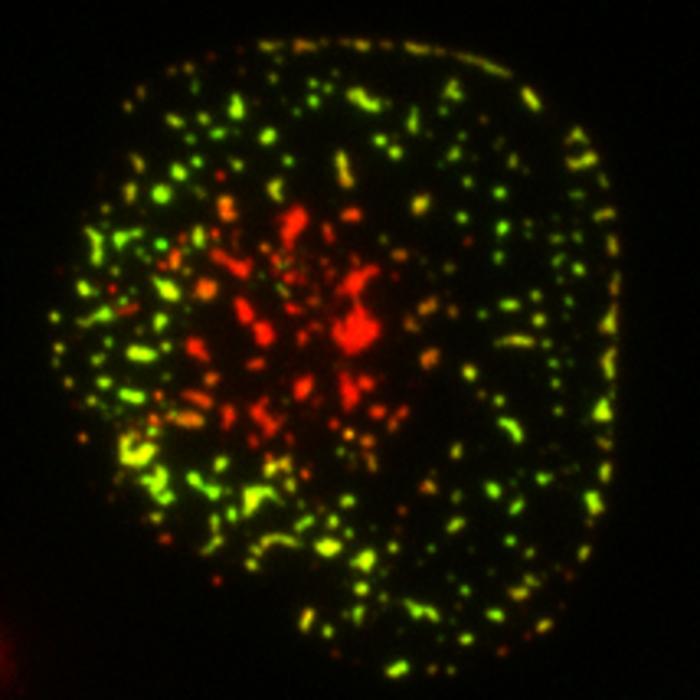How Information Organization Influences the Speed of Risk Perception
In recent years, the nexus between cognitive psychology and healthcare has emerged as a critical area of research, particularly when it comes to understanding how medical professionals perceive and react to varying levels of risk associated with health conditions. A remarkable study conducted by researchers at Tokyo Metropolitan University aims to explore the intricacies of […]


In recent years, the nexus between cognitive psychology and healthcare has emerged as a critical area of research, particularly when it comes to understanding how medical professionals perceive and react to varying levels of risk associated with health conditions. A remarkable study conducted by researchers at Tokyo Metropolitan University aims to explore the intricacies of risk perception among nursing professionals. By investigating how the spatial arrangement of information influences decision-making processes, this research opens new avenues for enhancing clinical practices and improving patient care.
Emerging from the initial exploration of the Spatial-Numerical Association of Response Codes (SNARC) effect, this study seeks to apply these principles to risk perception in healthcare settings. The SNARC effect posits that individuals respond more quickly to numerical or spatial cues based on their cognitive biases. This leads to questions about how these biases might be applied in a medical context, particularly for nurses who frequently encounter high-stakes decisions involving risk assessments.
The Tokyo Metropolitan University research team, comprised of Ryo Hishiya and Professor Masami Ishihara, designed their study focusing explicitly on the nursing profession. Given the demanding nature of their roles, which often requires rapid assessment of patient conditions, understanding the nuances of risk perception is crucial. The study leverages the concept of directional bias, positing that words associated with varying risk levels can elicit quicker responses based on their spatial positioning, thus influencing clinical judgment.
Throughout the study, participants, notably nursing professionals, were presented with a reference medical condition, specifically prostate cancer. They were then tasked with determining the risk level of other ailments relative to this reference. This innovative approach allowed the research team to investigate not only whether nurses could accurately assess risk but also how, and why, these spatial associations impacted their responsiveness.
Interestingly, the study revealed that participants demonstrated a clear “distance” effect in their responses. When a medical condition significantly diverged from the reference in terms of risk, nurses reacted faster, suggesting that extreme variations in risk perception trigger more immediate cognitive processing. However, the findings also indicated that these reactions were not uniform across all individuals. Instead, the directionality of their biases—left or right—exhibited variability, shedding light on the complexity of cognitive processing among healthcare professionals.
The research team coined the term Spatial-Risk Association of Response Codes (SRARC) to encapsulate this new aspect of cognitive psychology in clinical settings. The implications of these findings extend beyond mere academic interest; they suggest potential strategies for optimizing how nursing professionals access and interpret risk information, thereby enhancing the quality of patient care delivered in real time.
One of the pivotal contributions of Hishiya and Ishihara’s study lies in its potential application to clinical practice. Improved awareness and understanding of directional biases may lead to the development of training programs or information presentation formats that allow nursing staff to make swifter and more accurate assessments. If nursing professionals can efficiently gauge risk levels—with an awareness of their cognitive tendencies—it may translate into reduced response times during emergencies, resulting in better patient outcomes.
Incorporating these insights into healthcare protocols could redefine how medical information is conveyed in precisely high-pressure environments. For instance, utilizing specific layouts, color coding, or other spatial strategies when presenting information may align with the innate biases of nurses, thus streamlining decision-making processes. The ultimate goal is to ensure that clinical environments are tailored to support the cognitive faculties of healthcare providers, thereby promoting an enhanced standard of care.
As attention shifts towards healthcare systems’ responsiveness, this study emphasizes the importance of considering psychological components as integral to clinical practice. It underscores that understanding cognitive function should be understated when aiming to amplify the efficacy of healthcare delivery. Researchers are calling for a broader investigation into how different healthcare professions might exhibit similar or divergent cognitive biases, to further crystallize these principles in practice.
The significance of this study is magnified by its potential societal impact. As healthcare faces growing pressures—from an aging population to global health emergencies—the need for optimal decision-making frameworks becomes increasingly evident. By embedding cognitive psychology insights into clinical training and operations, healthcare systems can proactively enhance the capabilities of nursing professionals at a time when their roles are more pivotal than ever.
In conclusion, the investigation into risk perception concerning spatial biases highlights an exciting frontier in healthcare research. The preliminary findings promise to be a springboard for future studies, unraveling new strategies to empower nursing professionals and potentially influencing healthcare protocol on a broader scale. As awareness of cognitive biases in clinical settings grows, there is hope that nursing and medical practitioners will have the necessary tools to navigate complex decisional landscapes, ultimately leading to improved patient safety and care outcomes.
Subject of Research: Cognitive biases in risk perception among nursing professionals
Article Title: Dichotomous horizontal representation of acute deterioration risk on illnesses
News Publication Date: 4-Dec-2024
Web References: DOI Link
References: Not provided
Image Credits: Tokyo Metropolitan University
Keywords: Risk perception, nursing assessment, cognitive psychology, clinical decision-making, healthcare innovation
Tags: cognitive biases in healthcare decisionscognitive psychology in healthcaredecision-making in clinical practicesenhancing patient care through researchimplications for healthcare educationinfluence of information organization on decisionsnursing professionals and risk assessmentrapid assessment in nursingrisk assessment strategies for nursesrisk perception in nursingSNARC effect in medical contextspatial arrangement of information
What's Your Reaction?

































